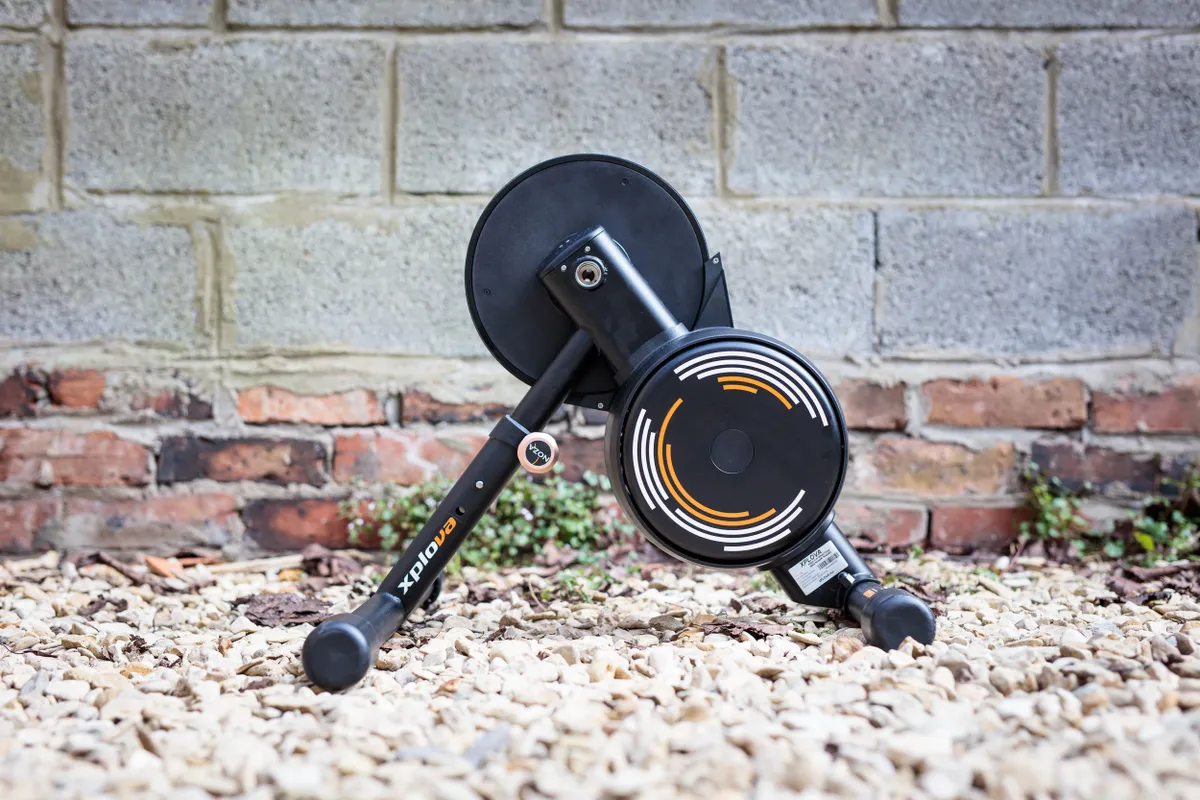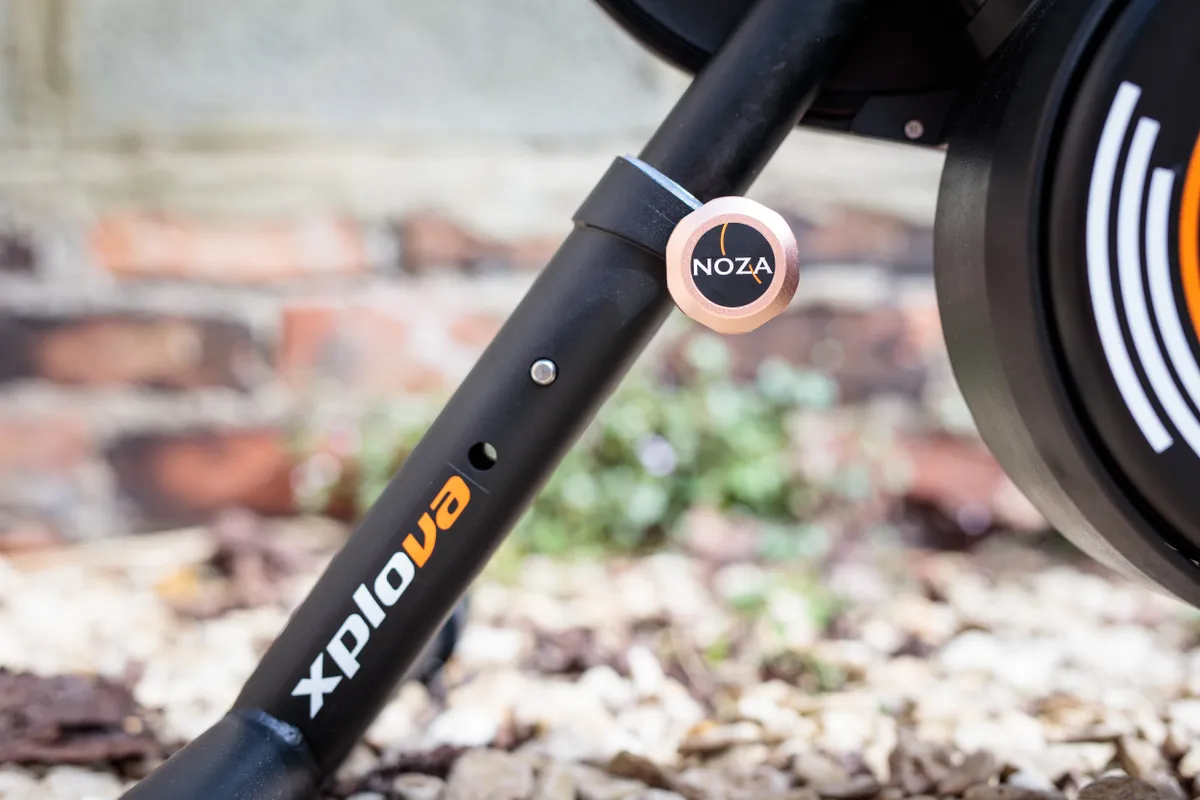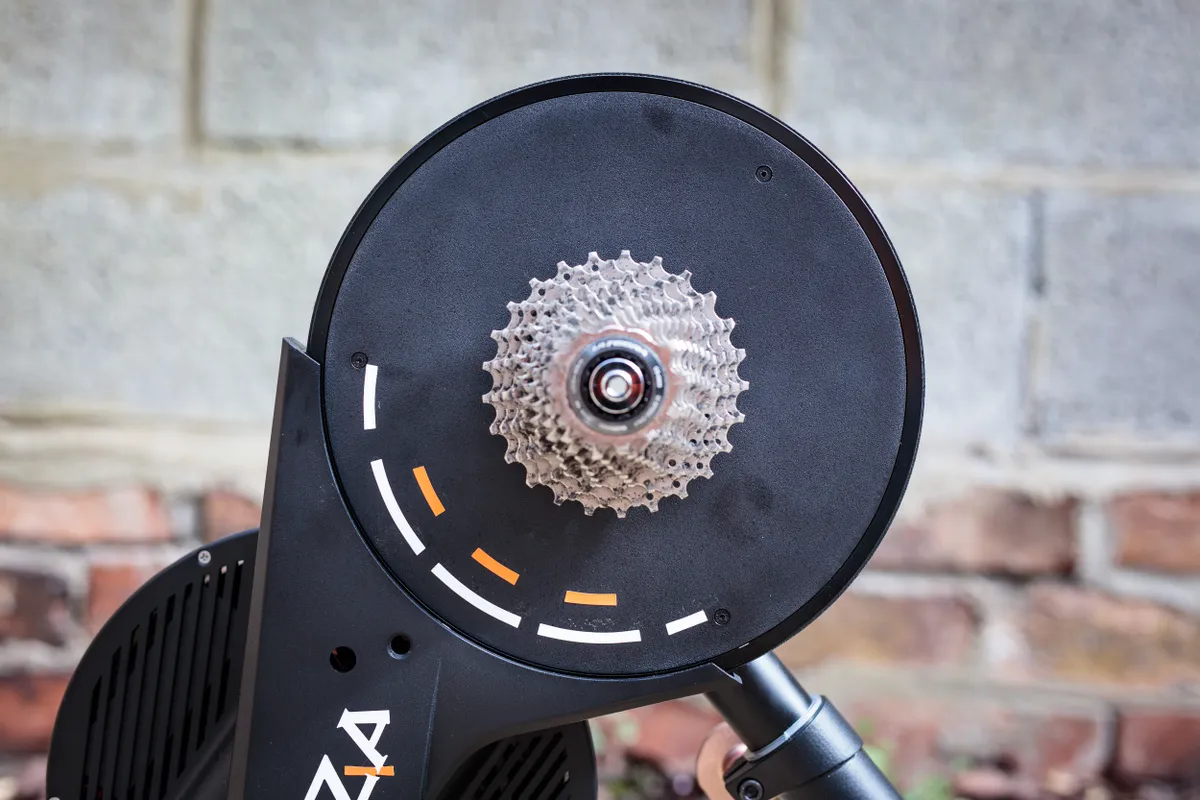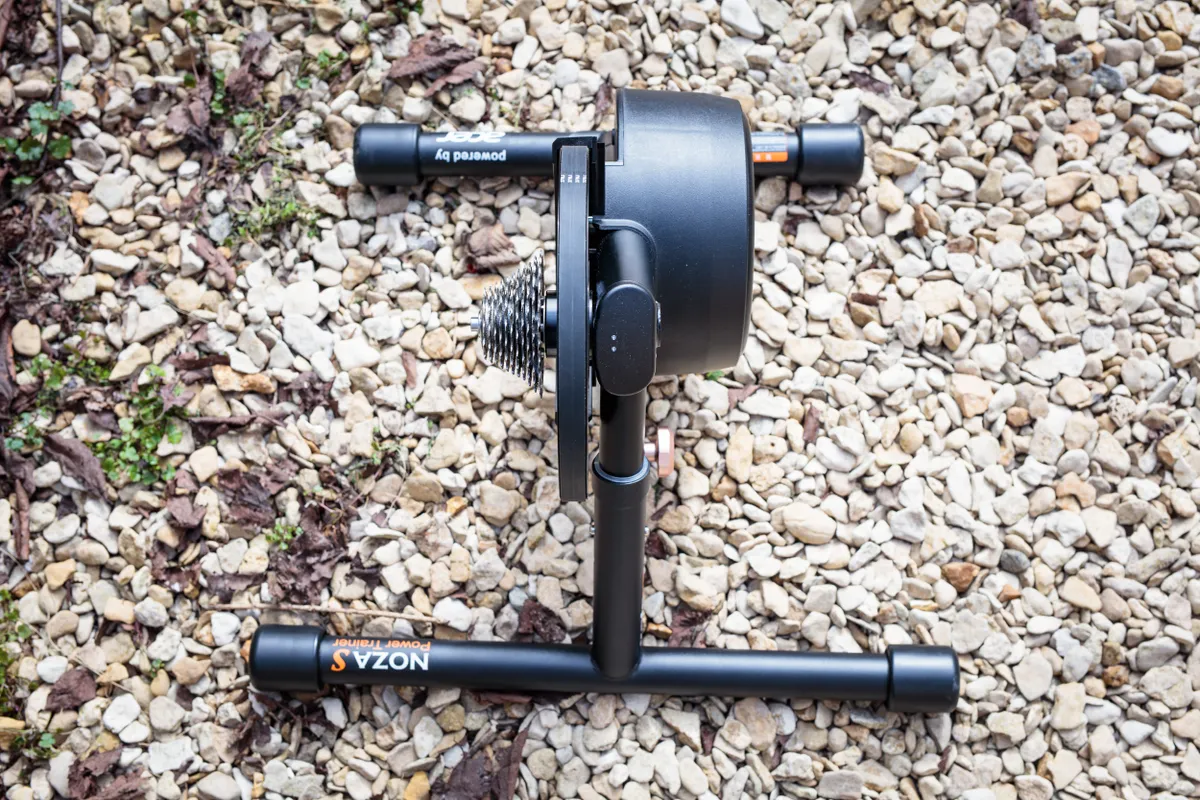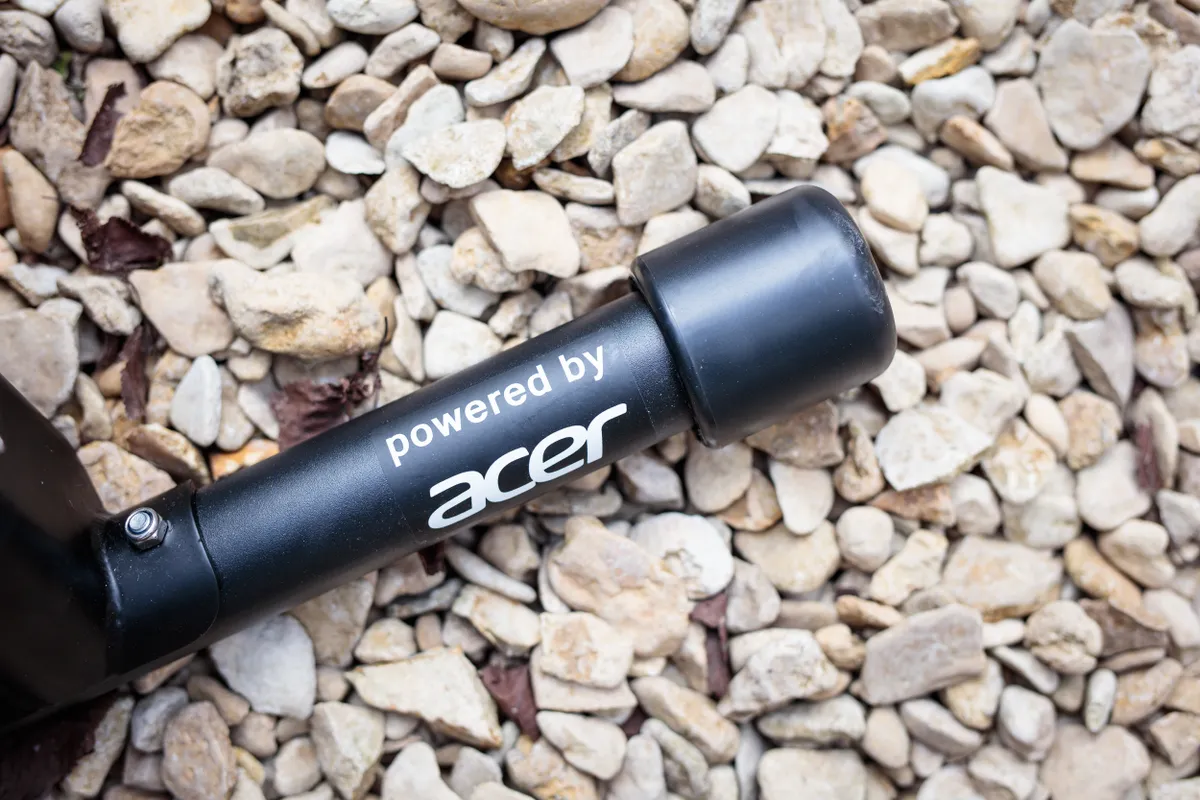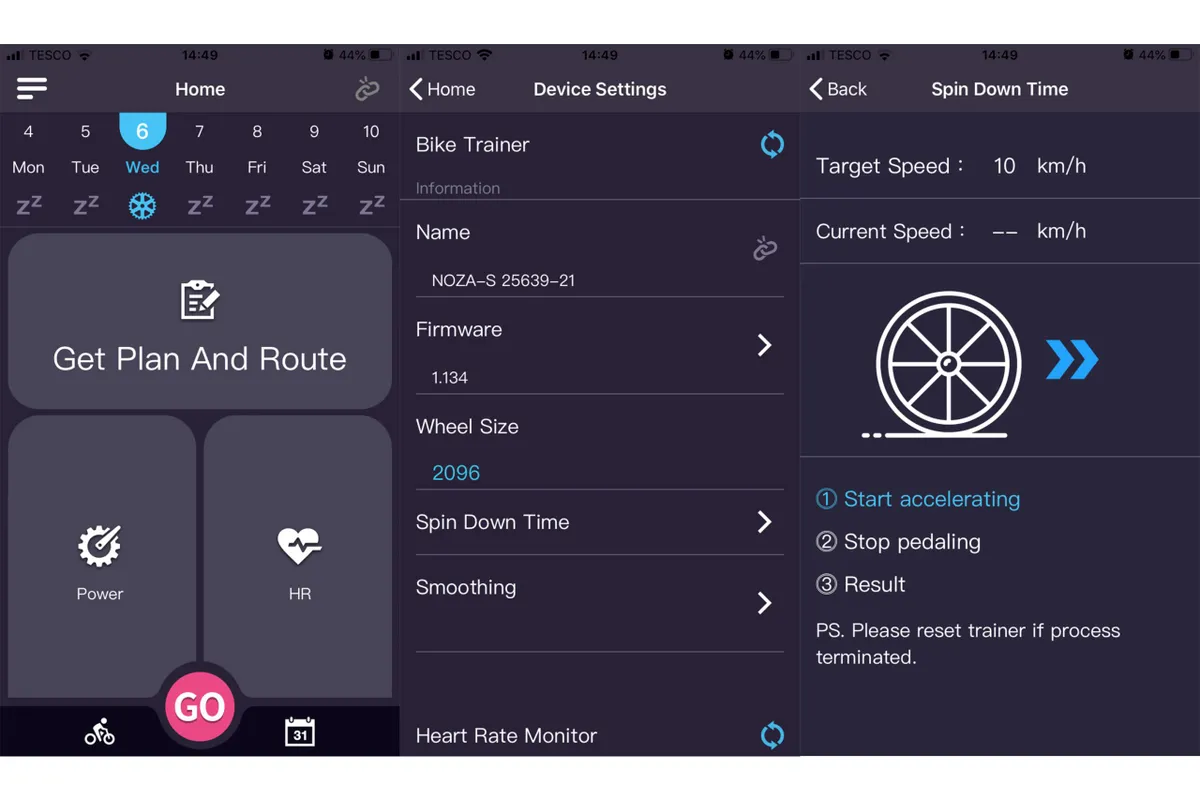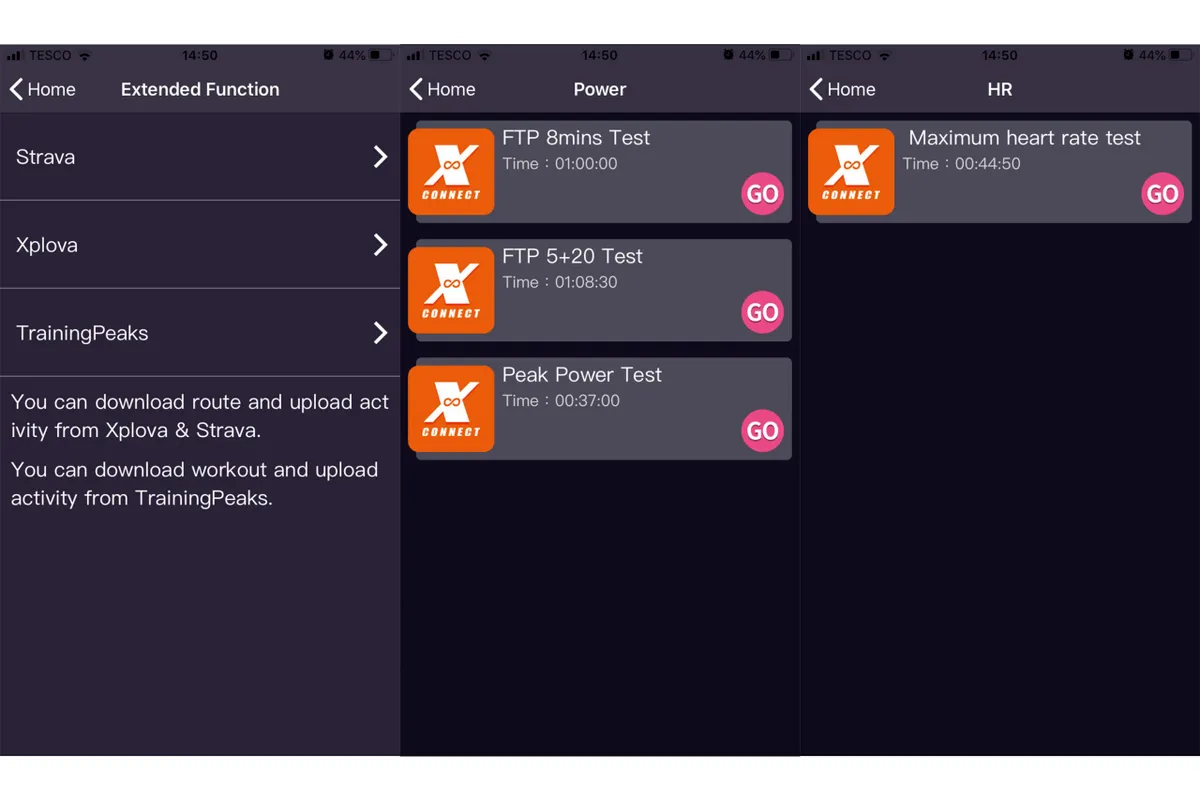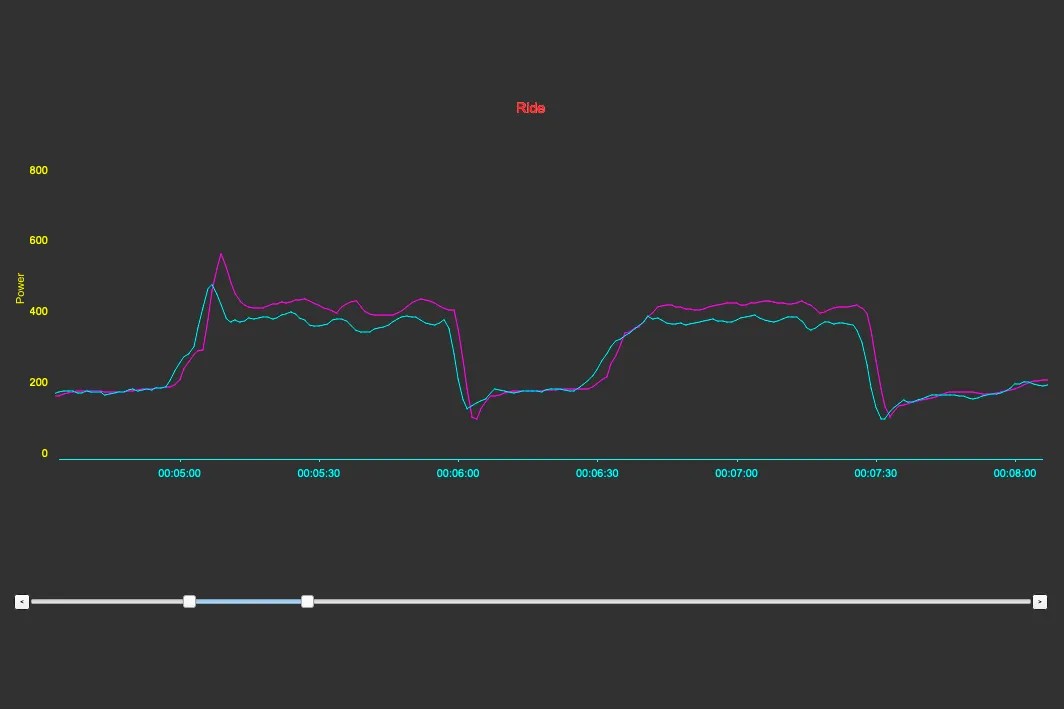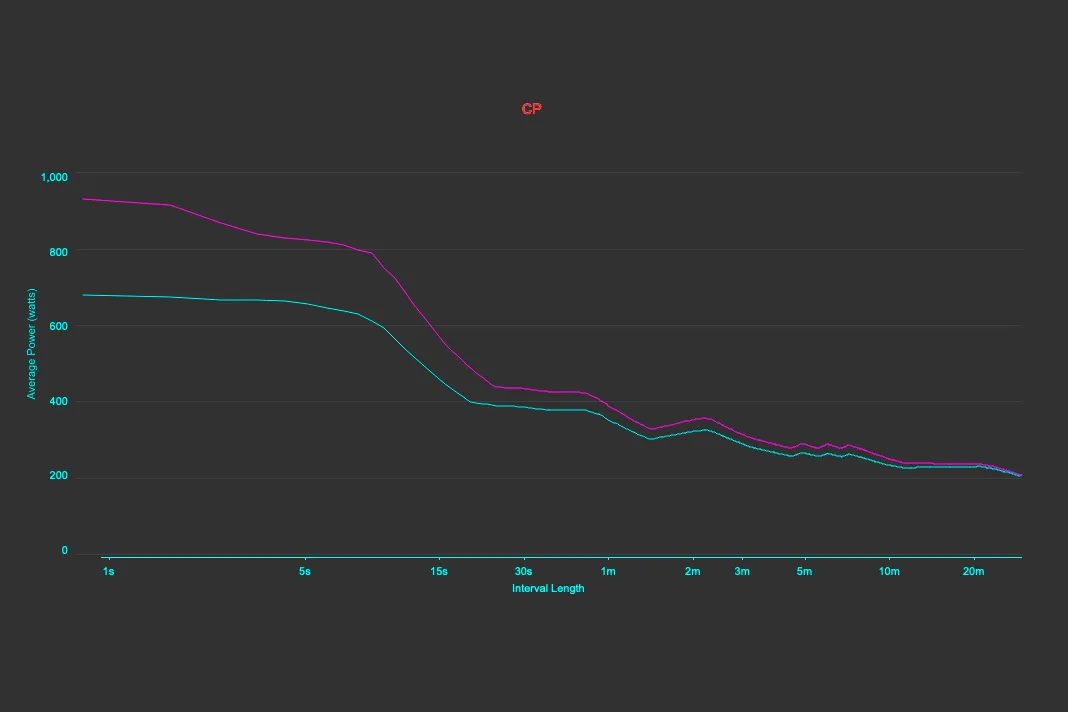The Noza S is the first smart trainer from Xplova, a company owned by Acer (the multinational electronics giant), and perhaps better known for its GPS bike computers. It’s also being sold under the LifeLine brand on Wiggle and Chain Reaction Cycles.
The Noza S is both simple to setup and use, with adaptors for thru-axles included in the box and no issues with connectivity whether using Zwift or the Xplova Workout app.
With axle adaptors and the included quick-release skewer in place, the unit weighs 17.7kg. This weight, combined with the lack of a carrying handle, does make it quite cumbersome to move around, but is in line with other smart trainers on the market. It also contributes to the unit's excellent stability.
The Nova S ships with a Shimano/SRAM 8-11 speed compatible freehub, but a cassette isn’t included so you’ll have to factor in the cost of one. There’s also no option to swap the freehub for a Campagnolo, XD driver or Micro Spline freehub.
Key specs and performance
The Noza S is a direct-drive smart trainer, meaning you remove the rear wheel and mount the bike directly to the trainer via the rear axle. The adjustable front leg means it's compatible with bikes with 26in, 27.5in/650b and 29in/700c wheels.
It can simulate gradients of up to 18 per cent and claims a max power of 2,500w with an accuracy range of /- 2.5 per cent. I'll admit right away, I'm not capable of testing that wattage ceiling, but it's safe to say it should be more than enough for the vast majority of cyclists.
Using the Xplova Workout app (available for iOS and Android devices) to update firmware and perform spin down calibration tests is easy and quick.
The app can also be used for training workouts or replicating GPX routes downloaded from Strava or TrainingPeaks, though I suspect most will use this trainer with interactive indoor cycling apps such as Zwift, RGT Cycling or Rouvy.
In use, noise levels from the trainer are minimal. Xplova claims 58db at 30kph, but in practice it’s quieter than the combination of my bike’s drivetrain and my fan, which makes it perfectly acceptable.
Ride feel is very good, with the 5.9kg flywheel contributing to a realistic simulation for both climbs and flat roads. The variable resistance was also very quick to respond on Zwift.
Eagle-eyed readers may notice a striking similarity in appearances between the Noza S and the Wahoo Kickr Core. As well as outward appearances they share the same RRP of £699.99, but the spec sheets are subtly different, indicating the internals aren’t the same.
The Noza S’s 18 per cent maximum simulated gradient and 5.9kg flywheel weight, for example, best the Kickr Core on paper. The Noza S doesn’t transmit cadence data, though, and the /- 2.5 per cent claimed power accuracy isn’t as tight as the Kickr Core’s claimed /- 2 per cent.
Unfortunately, power accuracy is also where the Noza S lags behind.
Power issues
I tested the Noza S over a number of weeks, comparing data with a Dura-Ace 7800 SRM power meter that was professionally serviced and calibrated in January 2020.
Before any data was captured for comparison purposes I did at least a 30 minute general ride to settle in both power meters, then performed a zero offset on each before testing began.
Xplova claims an accuracy range of /- 2.5 per cent. At sustained efforts of around or below 250 watts, the Noza S tracked the SRM generally within that. During short efforts above that, and particularly in sprints, the Noza S reported power output significantly higher, though.
During one minute intervals above 350 watts, for example, the Noza S reported average power around 11 per cent higher than the SRM.
The issue was more significant in sprints, with the Noza S reporting peak power around 24 per cent (over 170 watts) higher on average than the SRM.
This wasn't a one-off problem and chimed with my general experience of using the Noza S and collecting data over the previous couple of months; fine in steady state, too high in short bursts and sprints.
It may be possible this can be improved or even completely fixed with firmware updates, but there's no guarantee that it will.
Interestingly, the product pages on Wiggle and Chain Reaction Cycles note that staff have apparently performed "long term testing" on the Noza S and have provided feedback to Xplova to help improve the unit’s power accuracy, also stating "improvements continue to flow through via firmware updates."
I tested the Noza S with firmware version 1.134. This was the latest available version before performing the above test and, at the time of writing, is still the latest available firmware release.

When I put this to Xplova, it acknowledged it is working on improving the Noza S's power measurement for sprints and higher power intervals, and aims to release another firmware update by July 2020.
If possible, we'll look to test the Noza S again when the new firmware is released.
Why accuracy matters for power meters
When it comes to power meters, it's occasionally argued that consistency trumps accuracy, but, in my view, that's incorrect.
Inaccurate power data can have a significant effect on estimations of ride intensity, and therefore your FTP, TSS, training zones, and so on. All of which undermines its usefulness as a training tool.
It can lead you to make incorrect assumptions about your training load, calorific output, power zones etc. Being able to accurately quantify and track these metrics is the entire point of a power meter.
For example, you don’t want to return to the outside world to find your FTP has been overestimated – it won’t be much fun to find out in the middle of a climb/race/group ride that you can’t actually sustain the power you could on the trainer.
Likewise, if you’re trying to quantify your calorific output to manage a controlled weight loss programme, a power meter that reports high will overestimate how many calories you are burning and vice versa.
For those who own an on-bike power meter, the data from a separate, inaccurate power meter (on a smart trainer, for example) will skew your training data significantly. Racers who want to use power outputs from training to predict performance in events such as time trials will also be scuppered.
Even if you don't already own one, if you ever get a power meter in the future the new data won't match the old. All the valuable training data you accumulated on the inaccurate power meter will suddenly become useless for comparisons.
Xplova Noza S overall
In many ways, Xplova’s first attempt at a smart trainer is an impressive one; it’s simple and easy to use, offers good ride feel and is priced competitively. Its inaccurate power measurement above around 250 watts is, therefore, a substantial let down.
If you already own a reliable on-bike power meter, it is possible to work around this issue by connecting that unit to apps such as Zwift in place of the trainer's internal power meter. That's an expensive workaround if you don't already own one, though. I'd also argue you shouldn't need another power meter when a key selling point of a smart trainer is the built-in power meter.
If the power accuracy can be improved via a firmware update to within the claimed +/- 2.5 per cent range at all power outputs, then the Noza S would potentially be a very strong contender at the lower end of the direct-drive smart trainer market.
As things stand, though, it’s hard to recommend the Noza S above similarly priced competitors. Especially because those competitors offer comparable feature sets and more reliable power data.
Product
| Brand | xplova |
| Price | 799.99 EUR,699.99 GBP,879.99 USD |
| Weight | 17.7000, KILOGRAM () - Aactual weight, with QR adapters and skewer |
Features
| br_mount | direct_drive |
| br_foldingLegs | no |
| br_trainerType | smart_trainer |
| br_resistanceType | electromagnetic |
| br_wheelSize | 26in |
| br_wheelSize | 27_5in_650b |
| br_wheelSize | 29in_700c |
| br_connectivity | antPlus |
| br_connectivity | antPlus_fe_c |
| br_connectivity | bluetooth |
| br_deviceCompatibility | android |
| br_deviceCompatibility | ios |
| br_deviceCompatibility | mac |
| br_deviceCompatibility | windows |
| br_noise | 58.0000 |
| br_noise | DECIBEL |
| br_maxPower | 2500.0000 |
| br_maxPower | WATT |
| br_flywheelWeight | 5.9000 |
| br_flywheelWeight | KILOGRAM |
| br_maxGrade | 18.0000 |
| br_dimensions | 59 x 51 x 47cm |
| br_hubCompatibility | Shimanop/SRAM 8-11 speed |

